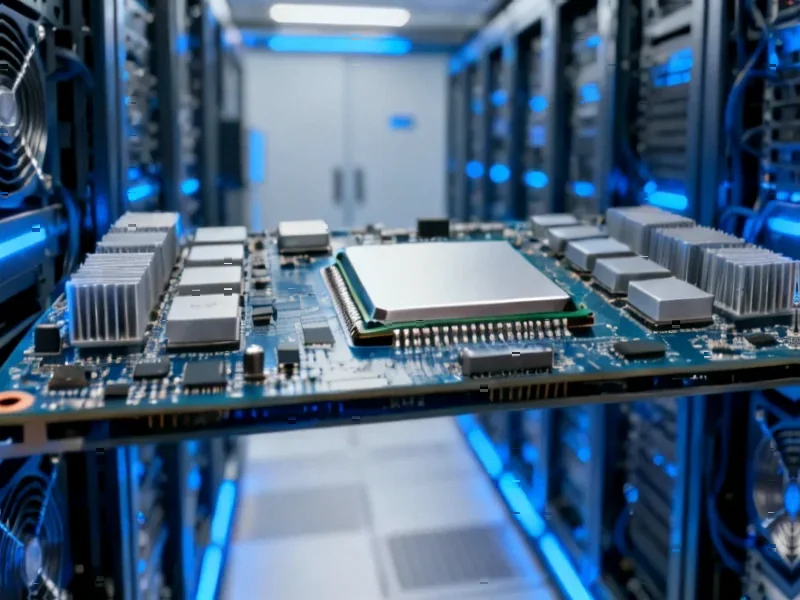According to TechRepublic, Nvidia has partnered with South Korea’s government and leading tech companies to supply over 260,000 advanced AI GPUs as part of the nation’s $10 billion push to become a global AI superpower. The agreement, announced during APEC meetings in Gyeongju, involves collaboration with the Ministry of Science and ICT, Samsung, SK Group, Hyundai Motor Group, and cloud providers Naver and Kakao. The deployment will begin next year and continue through the decade, with the government planning to deploy over 50,000 latest-generation Nvidia GPUs across the planned National AI Computing Center and local cloud providers. This single deal will more than quadruple South Korea’s AI chip stock, elevating the country to third place globally in GPU count behind only the US and China, according to statements from presidential secretary Ha Jung-woo. This massive infrastructure investment signals a fundamental shift in global AI strategy that demands deeper analysis.
Nvidia’s Strategic Pivot Away from China
This South Korea deal represents Nvidia’s most significant strategic realignment since US export controls began limiting advanced chip sales to China. With China representing approximately 20% of Nvidia’s data center revenue prior to restrictions, the company faces substantial revenue pressure that must be offset through alternative Asian markets. South Korea’s advanced semiconductor manufacturing ecosystem, led by Samsung’s foundry business, provides Nvidia with both a substantial customer and strategic manufacturing partner. The timing is critical—Nvidia needs to demonstrate to investors that it can maintain growth momentum despite losing access to one of its largest markets, making this high-profile partnership strategically essential for both near-term revenue and long-term positioning.
The Business Model Behind Sovereign AI
The concept of “sovereign AI” that South Korea is pursuing represents an emerging $50+ billion global market opportunity for Nvidia. Unlike traditional cloud infrastructure where companies rent computing power from US-based providers like AWS or Google Cloud, sovereign AI involves nations building their own fully controlled computing infrastructure. This model creates recurring revenue streams through ongoing chip sales, software licensing, and professional services rather than one-time transactions. For South Korea, the economic rationale is clear—by controlling their AI infrastructure, they can develop proprietary AI models for export rather than paying foreign providers for access. This transforms AI from a cost center into a potential export industry, mirroring the country’s successful semiconductor and automotive export strategies.
Reshaping the Global AI Competitive Landscape
This deal fundamentally alters the competitive dynamics in the global AI race. By elevating South Korea to the world’s third-largest AI computing power, Nvidia is creating a counterbalance to China’s AI ambitions while ensuring its technology remains central to multiple national AI strategies. The involvement of Samsung in building an “AI factory” with 50,000+ GPUs creates a powerful manufacturing and development partnership that could challenge TSMC’s dominance in advanced chip production. Meanwhile, SK Group’s creation of Asia’s first industrial AI cloud using Nvidia’s Blackwell architecture positions South Korea as a regional AI hub for neighboring countries that may face similar US export restrictions. This distributed approach to AI infrastructure reduces concentration risk for Nvidia while creating multiple growth vectors beyond the US market.
Revenue Implications and Market Timing
Financially, this deal likely represents $3-4 billion in direct GPU revenue for Nvidia based on current pricing for advanced AI chips, with additional revenue from networking equipment, software, and services potentially pushing the total value higher. More importantly, it establishes a template for similar sovereign AI deals with other US-aligned nations including Japan, Australia, and European countries. The phased deployment through the decade creates predictable revenue streams during a period of potential market volatility. For South Korean companies, the investment timing is strategic—they’re building AI capacity during a relative lull in global demand as other regions grapple with power constraints and economic uncertainty, potentially giving them a first-mover advantage when the next AI growth cycle accelerates.
The Critical Execution Challenges Ahead
While the strategic vision is compelling, the execution risks are substantial. Building and operating 260,000+ GPUs requires solving unprecedented power and cooling challenges—this infrastructure will consume roughly 300-400 megawatts of electricity, equivalent to a medium-sized city. South Korea’s existing power grid may require significant upgrades to support this load, creating potential delays. Additionally, the success of this initiative depends on developing indigenous AI talent capable of leveraging this infrastructure, which could prove challenging given global competition for AI researchers. The distributed nature of the deployment across multiple companies and government entities also creates coordination risks that could impact the overall effectiveness of the investment. How well these challenges are managed will determine whether South Korea achieves its ambition of becoming a top-three AI power or simply becomes the owner of expensive underutilized infrastructure.




